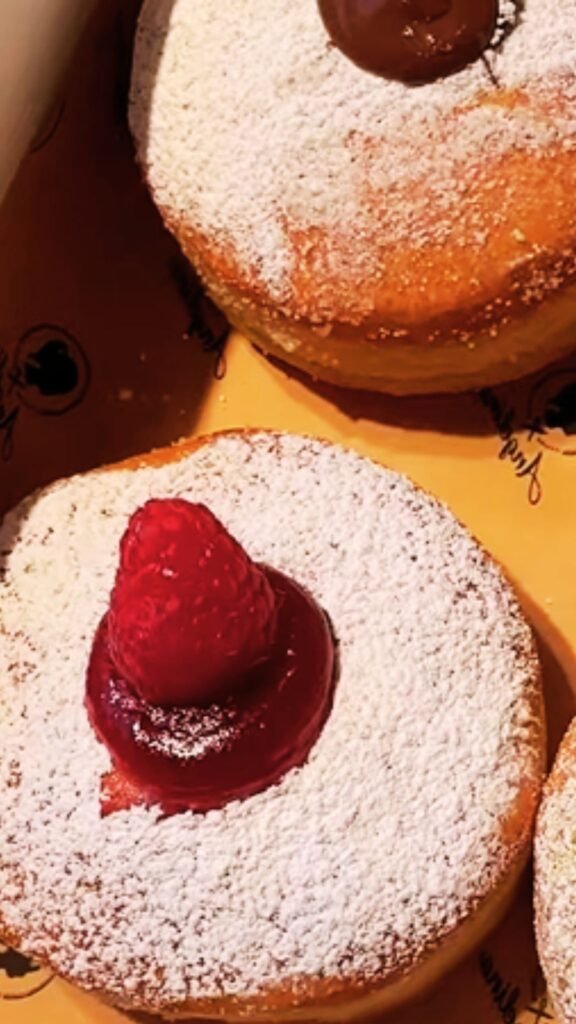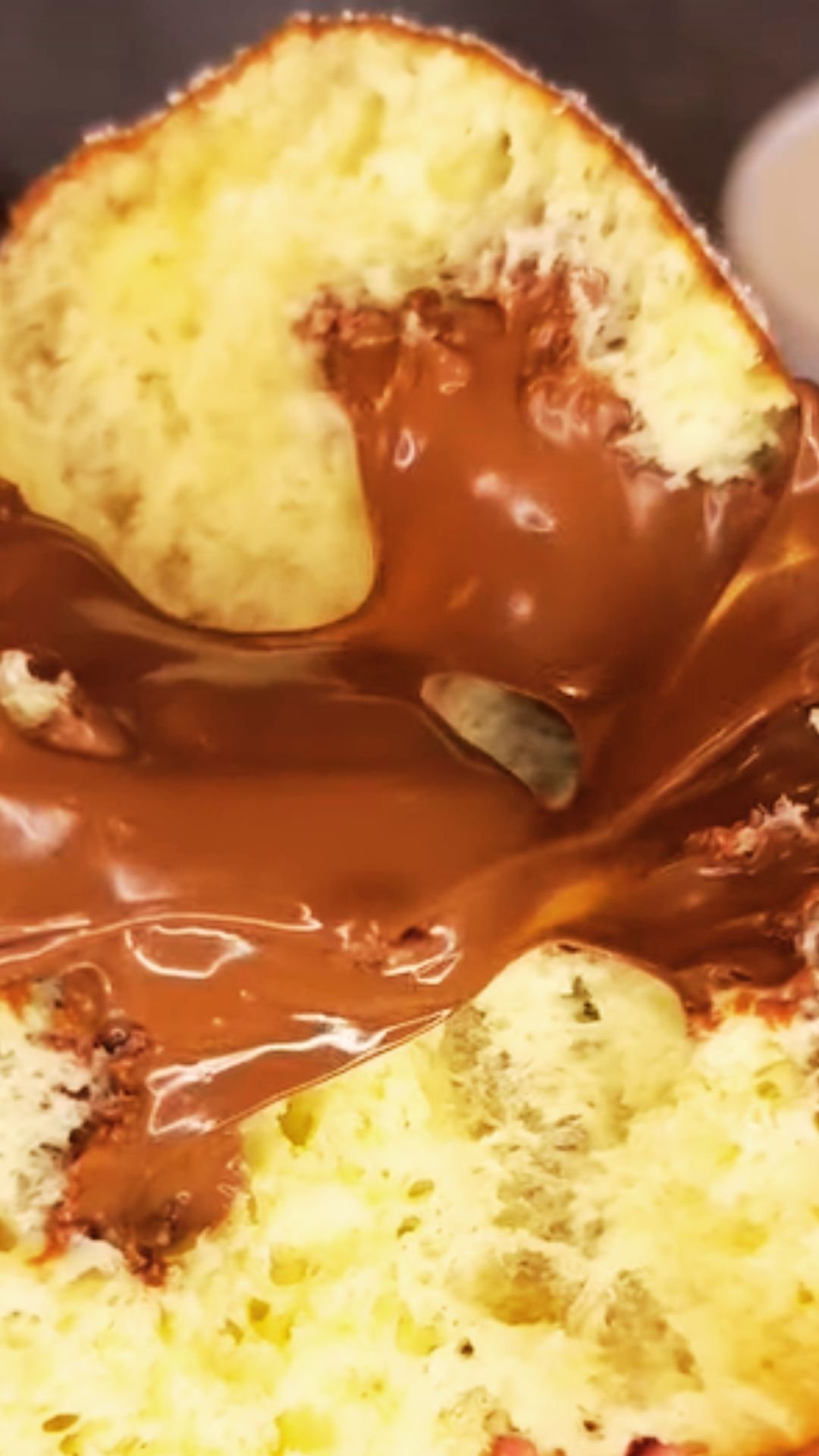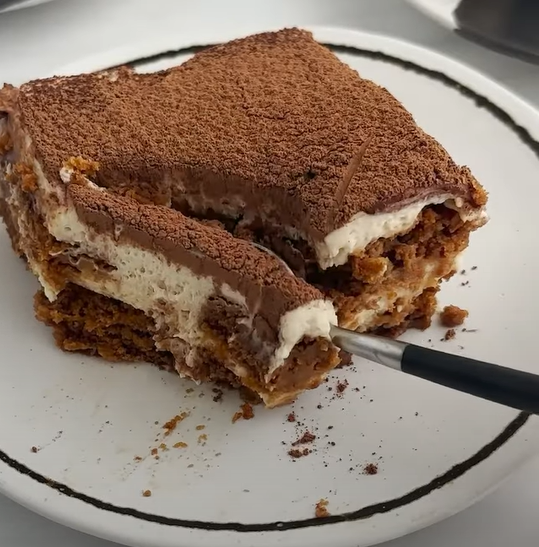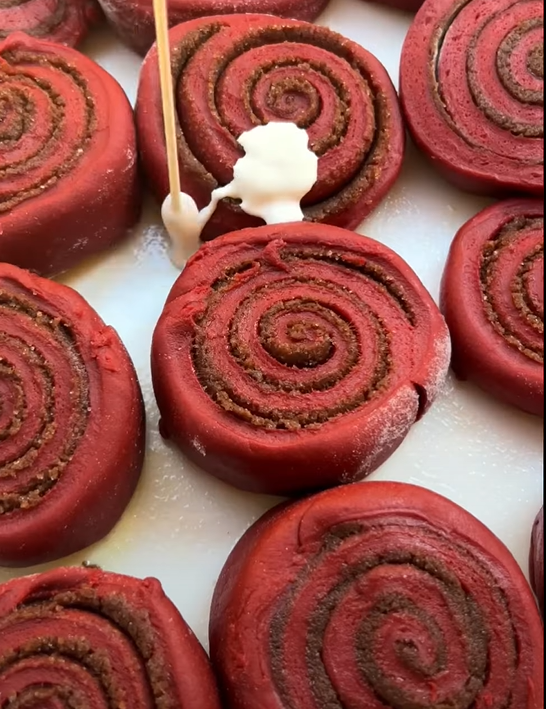When I first tasted bomboloni during my culinary travels through Italy, I knew I had discovered something truly special. These pillowy-soft, sugar-dusted Italian donuts captured my heart with their delicate texture and irresistible sweetness. Unlike their American counterparts, bomboloni possess a unique lightness that comes from their enriched yeast dough and careful preparation technique.
Today, I’m excited to share everything I’ve learned about creating authentic bomboloni in your own kitchen. From understanding the traditional methods passed down through generations of Italian bakers to mastering the perfect frying technique, this comprehensive guide will transform you into a bomboloni expert.
What Are Bomboloni? Understanding Italy’s Beloved Donuts
Bomboloni (singular: bombolone) represent one of Italy’s most cherished sweet treats, originating from the beautiful region of Tuscany. These spherical delights differ significantly from typical ring donuts, as they’re shaped into perfect balls and filled with various delectable creams or enjoyed plain with a generous coating of sugar.
The name “bomboloni” derives from the Italian word “bomba,” meaning bomb, which perfectly describes their round, explosive flavor profile. Traditional Italian bakeries (pasticcerie) serve these treats fresh throughout the day, often warm from the fryer and dusted with powdered sugar or granulated sugar.
Key characteristics of authentic bomboloni:
- Soft, airy interior with a slightly crispy exterior
- Enriched yeast dough containing eggs and butter
- Spherical shape without the traditional donut hole
- Often filled with pastry cream, jam, or Nutella
- Best enjoyed fresh and warm
Essential Ingredients for Perfect Bomboloni
Creating exceptional bomboloni requires high-quality ingredients and precise measurements. I’ve tested countless variations, and these ingredients consistently produce the best results:
Primary Dough Ingredients
| Ingredient | Quantity | Purpose | Quality Tips |
|---|---|---|---|
| All-purpose flour | 500g (4 cups) | Structure base | Use unbleached for better flavor |
| Active dry yeast | 7g (1 packet) | Leavening agent | Check expiration date |
| Warm milk | 250ml (1 cup) | Liquid base | Temperature: 110°F (43°C) |
| Large eggs | 2 whole | Richness and structure | Room temperature works best |
| Granulated sugar | 50g (¼ cup) | Sweetness and yeast food | Fine granulation preferred |
| Unsalted butter | 60g (4 tbsp) | Flavor and tenderness | European-style for richness |
| Fine sea salt | 5g (1 tsp) | Flavor enhancement | Avoid table salt |
| Pure vanilla extract | 1 tsp | Aromatic depth | Real vanilla, not artificial |
| Lemon zest | 1 lemon | Traditional flavor | Organic lemons preferred |
Frying and Finishing Ingredients
| Ingredient | Quantity | Purpose | Notes |
|---|---|---|---|
| Vegetable oil | 2-3 liters | Frying medium | Neutral flavor, high smoke point |
| Powdered sugar | 200g (2 cups) | Coating | For dusting finished bomboloni |
| Granulated sugar | 100g (½ cup) | Alternative coating | Traditional Italian preference |
Traditional Filling Options
Pastry Cream (Crema Pasticcera):
- 500ml whole milk
- 6 egg yolks
- 100g granulated sugar
- 50g cornstarch
- 1 vanilla bean (or 2 tsp extract)
- 30g butter
Jam Fillings:
- Apricot preserves
- Strawberry jam
- Cherry preserves
- Fig jam (traditional Tuscan choice)
Modern Variations:
- Nutella or chocolate hazelnut spread
- Lemon curd
- Ricotta cream with candied fruits
- Pistachio cream
Step-by-Step Bomboloni Recipe
Preparing the Dough
I always begin by activating my yeast to ensure perfect rising. In a small bowl, I combine the warm milk with a pinch of sugar and sprinkle the yeast over the surface. After 5-10 minutes, the mixture should become foamy and aromatic—this tells me the yeast is alive and ready to work its magic.
In a large mixing bowl, I whisk together the flour and salt, creating a well in the center. I add the activated yeast mixture, beaten eggs, remaining sugar, vanilla extract, and lemon zest. Using a wooden spoon or my hands, I gradually incorporate the ingredients until a shaggy dough forms.
Kneading technique: I turn the dough onto a lightly floured surface and knead for 8-10 minutes until it becomes smooth and elastic. The dough should feel slightly sticky but not wet. I gradually work in the softened butter, continuing to knead until the dough is silky and passes the windowpane test—when stretched thin, it should be translucent without tearing.
First Rise (Bulk Fermentation)
I place the kneaded dough in a lightly oiled bowl, turning once to coat all surfaces. Covering with a damp kitchen towel, I let it rise in a warm, draft-free location for 1-2 hours until doubled in size. The ideal temperature for rising is around 75-80°F (24-27°C).
Pro tip: I create a perfect proofing environment by turning my oven on for just 1 minute, then turning it off and placing the bowl inside with the door slightly ajar.
Shaping and Second Rise
Once the dough has doubled, I gently punch it down to release the gases. On a lightly floured surface, I divide the dough into 12-15 equal portions, each weighing approximately 60-70 grams. I shape each portion into a smooth ball by tucking the edges underneath and rolling gently between my palms.
I place the shaped bomboloni on parchment-lined baking sheets, leaving 2 inches between each ball. Covering with a light kitchen towel, I allow them to rise for another 45-60 minutes until they’re puffy and nearly doubled again.

Mastering the Frying Technique
Proper frying technique separates good bomboloni from extraordinary ones. I heat my oil to exactly 350°F (175°C) in a heavy-bottomed pot or deep fryer. Maintaining consistent temperature is crucial—too hot and the exterior burns before the interior cooks; too cool and the bomboloni absorb excessive oil.
Temperature monitoring: I use a reliable candy thermometer or instant-read thermometer, checking the oil temperature frequently and adjusting heat as needed.
Frying process: I carefully lower 3-4 bomboloni into the hot oil using a slotted spoon, being mindful not to overcrowd the pot. They should sizzle gently and rise to the surface within 10-15 seconds. I fry for 2-3 minutes per side until they achieve a beautiful golden-brown color.
Turning technique: I use two slotted spoons to gently turn each bombolone, ensuring even browning on all sides. The total frying time should be 4-6 minutes, depending on size.
Filling and Finishing Techniques
Creating Perfect Pastry Cream
For traditional crema pasticcera, I heat the milk with a split vanilla bean in a heavy saucepan until just simmering. In a separate bowl, I whisk egg yolks with sugar until pale, then gradually add cornstarch, whisking until smooth.
I slowly pour the hot milk into the egg mixture, whisking constantly to prevent curdling. Returning the mixture to the saucepan, I cook over medium heat, stirring continuously with a whisk, until it thickens and comes to a boil. I continue cooking for 1-2 minutes to eliminate the starchy taste, then remove from heat and whisk in butter.
Storage tip: I press plastic wrap directly onto the surface of the cream to prevent a skin from forming, then refrigerate until completely cool.
Filling Methods
Piping technique: I use a pastry bag fitted with a long, thin tip (Bismarck tip #230) to inject filling into the center of each bombolone. I insert the tip about halfway through the donut and squeeze gently while slowly withdrawing the tip.
Jam filling method: For jam fillings, I warm the preserve slightly to make piping easier, then use the same technique with a slightly smaller tip.
Sugar Coating Options
Traditional Italian style: I roll warm bomboloni in granulated sugar immediately after frying, while they’re still slightly warm and the sugar will adhere naturally.
Powdered sugar method: I dust cooled bomboloni with powdered sugar using a fine-mesh sieve, creating an elegant, bakery-style finish.
Troubleshooting Common Problems
Dense or Heavy Texture
Causes and solutions:
- Over-kneaded dough: Knead just until smooth and elastic
- Insufficient rising time: Ensure dough doubles in size during both rises
- Oil temperature too low: Maintain 350°F (175°C) consistently
- Old yeast: Always test yeast activity before using
Oil Absorption Issues
Prevention strategies:
- Maintain proper oil temperature throughout frying
- Don’t overcrowd the frying vessel
- Drain on paper towels immediately after frying
- Ensure dough isn’t over-proofed before frying
Filling Leakage
Solutions:
- Allow bomboloni to cool slightly before filling
- Don’t overfill—less is more
- Use proper piping technique with steady pressure
- Choose fillings with appropriate consistency
Storage and Serving Recommendations
Optimal Storage Methods
| Storage Method | Duration | Quality Notes |
|---|---|---|
| Room temperature (airtight) | 1-2 days | Best texture, slight quality loss |
| Refrigerated (covered) | 3-4 days | Texture becomes firmer |
| Frozen (unfilled) | 1 month | Thaw and warm before serving |
| Frozen (filled) | Not recommended | Cream fillings don’t freeze well |
Serving Suggestions
Traditional Italian presentation: I serve bomboloni on elegant ceramic plates with small espresso cups and tiny spoons for sharing filled varieties.
Modern serving ideas:
- Warm bomboloni with vanilla gelato
- Alongside fresh berries and whipped cream
- As part of an Italian breakfast spread with cappuccino
- Cut in half to showcase beautiful cream fillings
Temperature considerations: Bomboloni taste best when served slightly warm. I often warm day-old bomboloni in a 300°F (150°C) oven for 3-4 minutes before serving.
Nutritional Information and Dietary Considerations
Basic Nutritional Profile (per bombolone, unfilled)
| Nutrient | Amount | Daily Value % |
|---|---|---|
| Calories | 185 | 9% |
| Total Fat | 8g | 12% |
| Saturated Fat | 3g | 15% |
| Cholesterol | 35mg | 12% |
| Sodium | 180mg | 8% |
| Total Carbohydrates | 26g | 9% |
| Dietary Fiber | 1g | 4% |
| Sugars | 8g | – |
| Protein | 4g | 8% |
Dietary Modifications
Gluten-free adaptation: I’ve successfully made bomboloni using a high-quality gluten-free flour blend (with xanthan gum), though the texture is slightly different from traditional versions.
Dairy-free options: Substitute plant-based milk and vegan butter, ensuring the plant milk is warmed to the same temperature for yeast activation.
Reduced sugar variations: I can decrease the sugar in the dough by up to 25% without significantly affecting the texture, though this may slightly impact browning during frying.
Regional Variations Across Italy
Tuscan Bomboloni
The original bomboloni from Tuscany tend to be slightly larger and often filled with apricot jam or pastry cream. Traditional Tuscan bakers sometimes add a hint of orange zest to the dough.
Roman Bomboloni
In Rome, bomboloni are frequently smaller and served as part of the morning cornetto selection at local bars. They’re typically dusted with powdered sugar rather than granulated sugar.
Sicilian Influences
Sicilian versions sometimes incorporate ricotta-based fillings and may include candied fruits or pistachios, reflecting the island’s unique culinary traditions.
Northern Italian Variations
In northern regions like Lombardy and Veneto, bomboloni might be filled with seasonal fruit preserves or even savory preparations during certain celebrations.
Professional Tips from Italian Bakers
During my visits to traditional Italian bakeries, I learned several trade secrets that elevate homemade bomboloni:
Dough hydration: Professional bakers maintain precise hydration levels, adjusting flour quantities based on humidity and egg size variations.
Proofing environment: Many Italian bakeries use controlled proofing chambers, but I replicate this at home by maintaining consistent temperature and humidity during rising.
Oil quality management: Professional kitchens filter and test their frying oil regularly. At home, I strain oil after use and store it properly for multiple batches.
Timing coordination: Successful bomboloni production requires careful timing. I prepare fillings in advance and have my dusting sugar ready before beginning the frying process.
Frequently Asked Questions
Q. Can I make bomboloni dough ahead of time? Yes, I often prepare the dough through the first rise, then refrigerate it overnight. The cold fermentation actually improves flavor development. Remove from refrigeration 1-2 hours before shaping to bring to room temperature.
Q. What’s the best oil for frying bomboloni? I prefer neutral oils with high smoke points, such as canola, vegetable, or peanut oil. Avoid olive oil for frying as its low smoke point can create bitter flavors and uneven cooking.
Q. How do I know when bomboloni are properly cooked inside? Properly fried bomboloni should sound hollow when tapped gently. The internal temperature should reach 190°F (88°C). If you’re unsure, sacrifice one from your first batch to check the interior.
Q. Can I bake bomboloni instead of frying them? While traditional bomboloni are fried, I’ve successfully baked them at 375°F (190°C) for 12-15 minutes. Brush with melted butter before and after baking for better color and flavor, though the texture will be different from authentic fried versions.
Q. Why do my bomboloni deflate after frying? Deflation usually occurs when the oil temperature is too low, causing longer cooking times and structural weakness. Ensure your oil maintains 350°F (175°C) and avoid over-proofing the dough before frying.
Q. How can I prevent bomboloni from absorbing too much oil? Maintain proper oil temperature, don’t overcrowd the fryer, and drain immediately on paper towels. Over-proofed dough also absorbs more oil, so monitor rising times carefully.
Q. What’s the secret to achieving the perfect sugar coating? For granulated sugar coating, roll bomboloni while they’re still warm but not hot. For powdered sugar, let them cool completely first. I sometimes add a pinch of vanilla powder to my dusting sugar for extra flavor.
Q. Can I freeze filled bomboloni? I don’t recommend freezing filled bomboloni as cream fillings can separate and become watery upon thawing. However, unfilled bomboloni freeze well for up to one month. Thaw at room temperature and warm gently before serving.
Q. How do I achieve the traditional Italian texture? The key is proper gluten development through adequate kneading, correct hydration levels, and patience during the rising process. Don’t rush the fermentation—good bomboloni need time to develop their characteristic light, airy texture.
Q. What’s the difference between bomboloni and regular donuts? Bomboloni use an enriched yeast dough (containing eggs and butter), are shaped as balls rather than rings, and typically have a more delicate, brioche-like texture. They’re also traditionally served fresh and warm, often filled with cream or jam.
Creating authentic bomboloni requires patience, practice, and attention to detail, but the rewards are immeasurable. These golden spheres of sweetness represent more than just a recipe—they embody the Italian philosophy of taking time to create something truly special. Whether you enjoy them plain with a dusting of sugar or filled with rich pastry cream, homemade bomboloni will transport you straight to an Italian pasticceria with every delightful bite.


